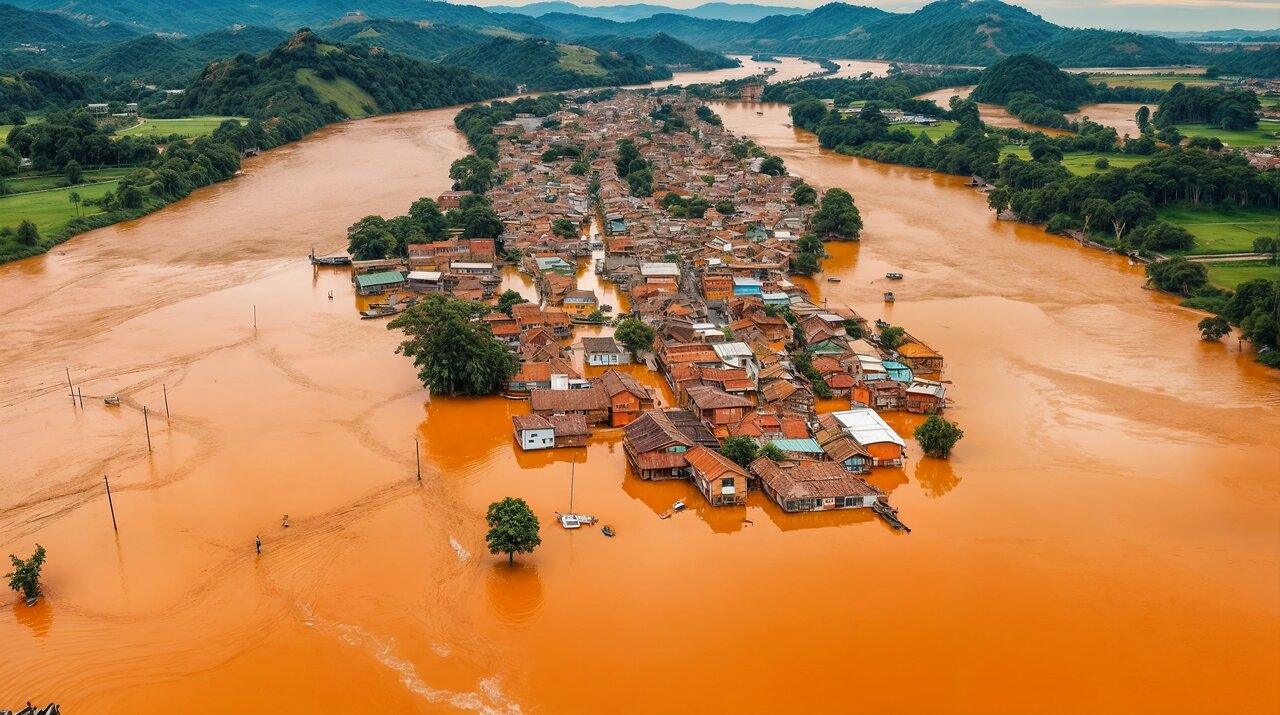Premium Only Content

Ecuador & Colombia NOW! Deadliest Floods in Years – See the Devastation
Less than four months ago, Ecuador was suffering from a devastating drought, but now the country faces the opposite extreme. Powerful and prolonged rains have triggered floods, landslides, and ground collapses.
According to authorities, these are the heaviest rains in the past five years, with western provinces hit the hardest.
Weather conditions remain particularly severe in the coastal region, where 22 rivers have overflowed, and 25 more are reported to be rising.
On March 8th, intense rains lasting over an hour struck Portoviejo, Manabí province. More than twenty families were affected by the extreme weather, with water rising to adult neck level in some areas. Shocked by the scale of the event, residents worked tirelessly to pump water out of their homes.
On March 10th, heavy rains caused severe damage in Loja province, southern Ecuador. The Malacatos River, running through the city, burst its banks, sweeping people away in the streets and collapsing a bridge in Simón Bolívar Park.
Given the scale of the crisis, the national government declared a red-level emergency in six provinces.
Since February, rains in Ecuador have damaged over 23,000 homes, 16 bridges, and more than 19 miles of roads across the country. The agricultural sector also suffered significant losses, with floods destroying over 14,000 acres of crops and killing around 50,000 animals.
According to the National Secretariat for Risk Management as of March 10th, at least 18 people have died, and over 83,500 have been affected.
In Bogotá, the capital of neighboring Colombia, heavy rains triggered severe flooding. Water submerged two major transportation routes, cutting off the northern part of the city. Some schools have switched to remote learning, while in Soacha, floods affected more than fifty homes.
A key factor driving the rise in flood frequency and intensity worldwide is increased atmospheric humidity, fueled by abnormal ocean warming.
However, there’s hope: scientists have developed a technology that can simultaneously reduce air humidity and clear microplastics from the oceans. This could help restore the ocean’s natural role as the planet’s "air conditioner," easing extreme weather events.
Learn more about this in the film "Anthropogenic Factor in the Ocean’s Demise."
-
 8:36
8:36
AllatRa TV
4 days agoU.S. Navy Captain, Gary Tabach: The Cost of Disinformation | ALLATRA TV
25 -
 19:20
19:20
Stephen Gardner
1 day ago🚨Trump's latest Marco Rubio ORDER LEAKED by New York Times!
86.9K124 -
 21:33
21:33
Liberty Hangout
2 days agoDemocrats Invite Me Over For Breakfast
11.7K47 -
 2:38:56
2:38:56
FreshandFit
15 hours agoShe Left Her Man To Find A HVM In Miami w/ 6IX9INE
365K156 -
 11:16
11:16
Blackstone Griddles
14 hours agoDouble Roasted Green Chile Smash Burger on the Blackstone Griddle
7.13K2 -
 14:36
14:36
Tactical Advisor
18 hours agoNew Military Thermal Target
12.7K2 -
 2:10
2:10
OfficialJadenWilliams
17 hours agoHow we treated AI in 2023 vs 2025
6.98K4 -
 9:02
9:02
The Shannon Joy Show
18 hours agoWhy is Canada PERSECUTING Dr. Makis
18.3K6 -
 57:03
57:03
NAG Podcast
14 hours agoAlex Stein: BOLDTALK W/Angela Belcamino
11.3K2 -
 8:41
8:41
Freedom Frontline
17 hours agoMaria Bartiromo Plays The Clip That ENDS Adam Schiff’s Career
17.2K7